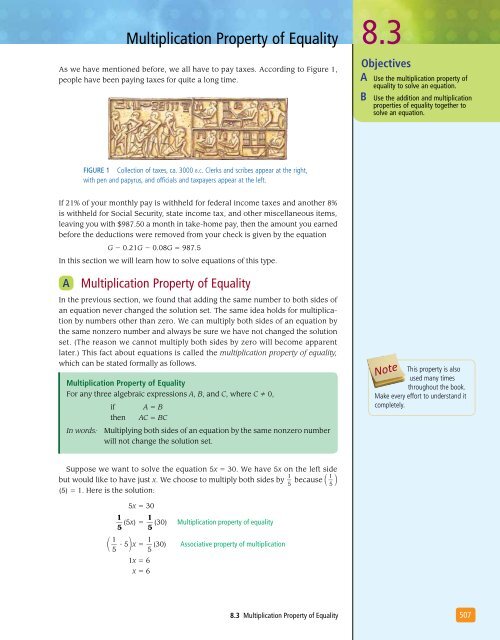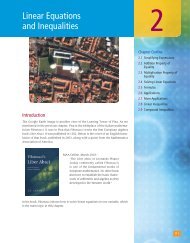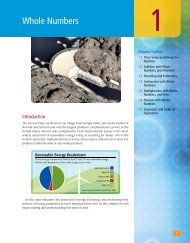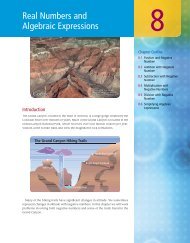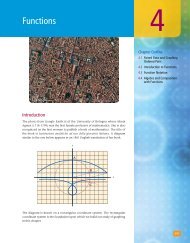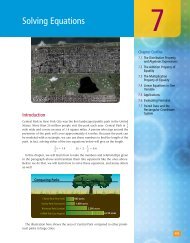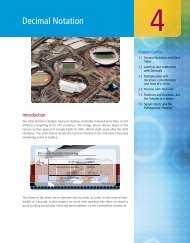Chapter 8 - XYZ Custom Plus
Chapter 8 - XYZ Custom Plus
Chapter 8 - XYZ Custom Plus
You also want an ePaper? Increase the reach of your titles
YUMPU automatically turns print PDFs into web optimized ePapers that Google loves.
Multiplication Property of Equality 8.3As we have mentioned before, we all have to pay taxes. According to Figure 1,people have been paying taxes for quite a long time.ObjectivesA Use the multiplication property ofequality to solve an equation.B Use the addition and multiplicationproperties of equality together tosolve an equation.Figure 1 Collection of taxes, ca. 3000 b.c. Clerks and scribes appear at the right,with pen and papyrus, and officials and taxpayers appear at the left.If 21% of your monthly pay is withheld for federal income taxes and another 8%is withheld for Social Security, state income tax, and other miscellaneous items,leaving you with $987.50 a month in take-home pay, then the amount you earnedbefore the deductions were removed from your check is given by the equationG − 0.21G − 0.08G = 987.5In this section we will learn how to solve equations of this type.A Multiplication Property of EqualityIn the previous section, we found that adding the same number to both sides ofan equation never changed the solution set. The same idea holds for multiplicationby numbers other than zero. We can multiply both sides of an equation bythe same nonzero number and always be sure we have not changed the solutionset. (The reason we cannot multiply both sides by zero will become apparentlater.) This fact about equations is called the multiplication property of equality,which can be stated formally as follows.Multiplication Property of EqualityFor any three algebraic expressions A, B, and C, where C ≠ 0,if A = Bthen AC = BCIn words: Multiplying both sides of an equation by the same nonzero numberwill not change the solution set.NoteThis property is alsoused many timesthroughout the book.Make every effort to understand itcompletely.Suppose we want to solve the equation 5x = 30. We have 5x on the left sidebut would like to have just x. We choose to multiply both sides by _1 5 because _ 1 5 (5) = 1. Here is the solution:5x = 30_1 5 (5x) = 1 _(30) Multiplication property of equality5 1 _5 ⋅ 5 x = _1 (30) Associative property of multiplication51x = 6x = 68.3 Multiplication Property of Equality507


